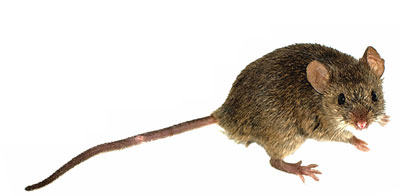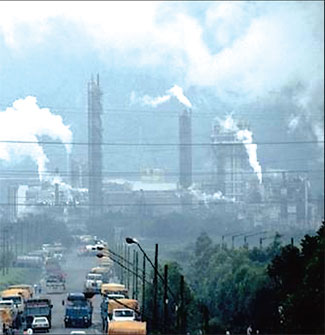|
-new-n.jpg)
Child abuse:
Schoolchildren to be taught protective measures
by Ananda KANNANGARA
The National Child Protection Authority (NCPA) has decided to educate
schoolchildren on how to protect themselves from people who try to
subject them to abuse and sexual harassment, and also various other
similar problems they face on a regular basis.
According to the NCPA, special lessons which are based on these
subjects will be prepared and taught at school as part of their school
curriculum.
The programme will be carried out through the Education Department
with the assistance of education authorities.
The NCPA, Chairperson, Anoma Dissanayake told the Junior Observer
that most children, not only females, but also males in today's society
faced many forms of harassment, especially sexual abuse without knowing
the gravity of such offences.
"It is the duty of parents, elders and school teachers to educate
children on these matters and prevent them from being engaged in such
offences."She said teachers could play a major role to prevent children
getting involved in such activities and therefore the NCPA proposes to
educate children on these subjects at school level.
A senior NCPA official said in addition to schoolchildren being
subject to physical harassment, today many schoolchildren are also
victims of highway accidents, very often due to the carelessness of
drivers.
He said therefore schoolchildren should also be educated on how to
travel on roads and avoid road accidents .
"Children who travel by school vans could advise their drivers to
refrain from careless driving or inform parents about such careless
drivers,"the official said.
In the event the children cannot talk directly to the van drivers
about their manner of driving, the children could even make complaints
to the Police regarding their careless driving, he said.
He also focused on the school van - bus accident which occurred at
Horagolla in Nittambuwa recently and said 14 schoolchildren were
seriously injured due to the carelessness of the driver.
He said nine school children, travelling in a school van were also
injured at Mt. Lavinia in January this year due to careless driving.
Eye injection gives a blind mouse the ability to see

This medication could be key to restoring sight in certain cases, but
real obstacles exist .Losing the use of your eyes via retinitis
pigmentosa or macular degeneration - diseases that effect your ability
to sense light - can be absolutely traumatizing. But thanks to new
research on lab mice, these types of blindness may soon be reversible
through a series of injections.
In the study, a group of blind lab mice were given injections of a
chemical called acrylamide-azobenzene-quaternary ammonium, or AAQ for
short.
Previously known to be active on nerve cells, AAQ, when injected
directly into a mouse's eye, allowed the animal to once again sense
light. Though it's difficult for researchers to measure exactly how much
of the mouse's sight was restored by the injection, lab testing has so
far shown the mice regaining near-normal function.So far, AAQ has only
been tested on mice - upcoming primate tests will tell scientists
whether or not this drug is a possible solution for treating retinitis
pigmentosa or macular degeneration in humans. But even if tests point to
AAQ's effectiveness, regular injections may not be a preferred solution.
After all, AAQ's effects only last for about 24 hours on the mice before
they require another injection directly into the eye.
- Tecca
Oceans and ecosystems still absorb half of Earth's greenhouse gases
Earth's oceans, forests and other ecosystems continue to soak up
about half the carbon dioxide emitted into the atmosphere by human
activities, even as those emissions have increased, according to a study
by University of Colorado and NOAA scientists published August 1 in the
journal Nature.
 The
scientists analysed 50 years of global carbon dioxide (CO2) measurements
and found that the processes by which the planet's oceans and ecosystems
absorb the greenhouse gas are not yet at capacity. The
scientists analysed 50 years of global carbon dioxide (CO2) measurements
and found that the processes by which the planet's oceans and ecosystems
absorb the greenhouse gas are not yet at capacity.
"Globally, these carbon dioxide 'sinks' have roughly kept pace with
emissions from human activities, continuing to draw about half of the
emitted CO2 back out of the atmosphere. However, we do not expect this
to continue indefinitely," said NOAA's Pieter Tans, a climate researcher
with NOAA's Earth System Research Laboratory in Boulder, Colo., and co-authour
of the study. The University of Colorado's Ashley Ballantyne is lead
authour.
Carbon dioxide is emitted into the atmosphere mainly by fossil fuel
combustion but also by forest fires and some natural processes. The gas
can also be pulled out of the atmosphere into the tissues of growing
plants or absorbed by the waters of Earth's oceans. A series of recent
studies suggested that natural sinks of carbon dioxide might no longer
be keeping up with the increasing rate of emissions. If that were to
happen, it would cause a faster-than-expected rise in atmospheric carbon
dioxide and projected climate change impacts.
Ballantyne, Tans and their colleagues saw no faster-than-expected
rise, however.. Their estimate showed that overall, oceans and natural
ecosystems continue to pull about half of people's carbon dioxide
emissions out of the atmosphere. Since emissions of CO2 have increased
substantially since 1960, Ballantyne said, "Earth is taking up twice as
much CO2 today as it was 50 years ago."The rest continues to accumulate
in the atmosphere, where it is likely to accelerate global warming.
The researchers also scrutinized national and international
inventories or bookkeeping estimates of CO2 emissions by people and
compared those to the increasing atmospheric levels of the gas.The
uptake of carbon dioxide by the oceans and by ecosystems is expected to
slow down gradually," Tans said. Oceans, for example, are already
becoming more acidic as they absorb about a quarter of the carbon
dioxide pumped into the air by human activities. "As the oceans acidify,
we know it becomes harder to stuff even more CO2 into the oceans," Tans
said. "We just don't see a letup, globally, yet.
-ScienceDaily |

